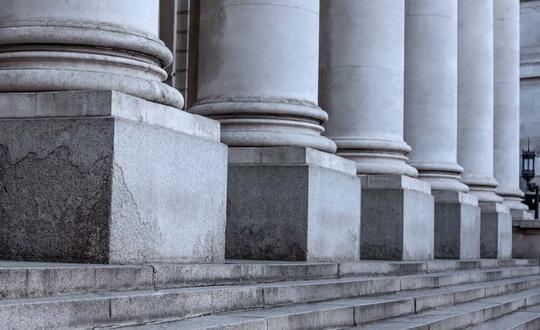Supreme Court Rules Copyright Claims Timeless with Timely Filing
May 09 2024
An audio summary of this article is available in the player below. Scroll to keep reading.
Listen and subscribe to Womble Perspectives wherever you get your podcasts.
On Thursday, May 9, the U.S. Supreme Court ruled that plaintiffs in copyright litigation no longer are bound by a three-year statute of limitations for bringing a claim to recover damages.
In the 6-3 decision, the court’s majority wrote, “There is no time limit on monetary recovery. So a copyright owner possessing a timely claim is entitled to damages for infringement, no matter when the infringement occurred.”
The Supreme Court took Warner Chappell Music Inc. et al. v. Sherman Nealy et al. after a split in the Second and Eleventh Circuits.
The Second Circuit ruled that the three-year statute of limitations applied in copyright litigation even when the discovery rule is applied. The discovery rule says that clock on recovering damages begins running on a copyright violation when it is discovered, not when the alleged violation first occurs.
The Eleventh Circuit ruled in Warner Chappell v. Nealy that Nealy, a music producer, could recover damages for the unauthorized use of songs he owns, even though the alleged infringements in question took place more than three years before Nealy filed suit in 2018. Key, however, was that Nealy timely filed his suit within three years of discovering the infringement.
Lawyers for Warner Chappell argued the statute of limitations applied, except in cases where fraud is involved. The Supreme Court’s majority rejected that argument.
This ruling drastically alters the landscape of copyright law by removing time limits on monetary recovery. Since the Supreme Court answered the question of whether a copyright plaintiff can recover damages for acts that allegedly occurred more than three years before the filing of a lawsuit in the affirmative, the question becomes, “just how far back can a copyright plaintiff practically reach for damages from a long-ago infringer?” The likely answer to this question is that a copyright plaintiff can reach as far back for damages as the Federal Rules of Evidence will allow. In other words, if a copyright plaintiff can collect evidence that is reliable and relevant and not unfairly prejudicial to the long-ago infringer, a copyright plaintiff can reach as far back as they want to for support of their statutory or actual damages (whichever they elect).
The Supreme Court’s ruling significantly alters the landscape of copyright law by expanding the time limits for monetary recovery. It also gives infringement victims some breathing room for taking action against and being compensated for older harms. As a result of this Supreme Court decision, clients encountering an infringement, whether in the notes of a song, in a written work or even a print or painting available online or in an art shop, no matter how long ago the violation occurred, can be compensated with monetary damages. Clients can now be that much more wary and savvy when seeing or hearing something they created accredited to someone else but should not wait too long to do something about it.